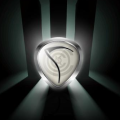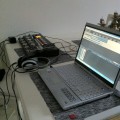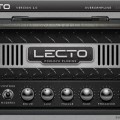After seeing this post a while back I started thinking.
[facebookpost https://www.facebook.com/ola.englund/posts/10151600460549013]
Every musician needs a backup strategy – you hear all the time about musicians and other artists losing all of their original content because of a lost or broken laptop. Ola apparently thought this through and backs up his computer. However, taking it from everybody’s favorite developer Scott Hanselman, that is still not a real backup:
- Backing up your laptop to an SD Card in the same laptop is #notabackup
- Backing up to a hard drive that is 6 inches away from your computer is #notabackup
- Backing up your Gmail to another Gmail account is #notabackup
- Backing up your book by copying it to another folder is #notabackup
- The photos that are still in your camera memory are #notabackup
He’s formulated a backup rule of three:
- 3 copies of anything you care about – Two isn’t enough if it’s important.
- 2 different formats – Example: Dropbox+DVDs or Hard Drive+Memory Stick or CD+Crash Plan, or more
- 1 off-site backup – If the house burns down, how will you get your memories back?
Why backup?
The answer to why backup might seem a little obvious, but there’s actually a purpose to being a little more specific. You make backups to protect yourself from the following:
- Hardware failure – your disks breaking is the most common reason for backing up, and probably the one you think of first
- Loss of hardware – your computer or your disks could be stolen or lost in a fire
- Human error – you deleting the wrong file or wrong track inside your DAW is a lot likelier than your disks breaking, actually. It could also be that you’d like to return to an older version of a file.
Some hands-on advice
Enough with the theory and on with some practical advice. My best advice to you is to setup:
- A continuous automatic local backup. Time Machine is an excellent choice if you’re on a Mac, Windows 8 has a similar feature called File History. In earlier versions of Windows you can either use the built-in backup or a third-party app like Cobian. The purpose is easy access to older file versions or deleted files.
- A continuous automatic remote backup. The easiest way to accomplish this is using a service like BackBlaze. The purpose is safe access to previous file versions or deleted files.
- A periodic static backup. Make a backup to an external hard disk at a certain interval, maybe twice a year. Store these hard disks somewhere other than your home. The reason is that extra security, and for an extra chance to get an old file version (service like BackBlaze keep only a finite number of file versions).
My setup – bonus backup
Apart from the backups above I also use Dropbox. Dropbox is a service that synchronizes a special folder on your computer to the cloud and to your other computers connected to DropBox. I actually do all of my recording inside my DAW to my Dropbox folder. I’ve been ridiculed or at least questions on a bunch of forums, but it’s always worked perfectly for me. Dropbox won’t ever mess with your files, they are just seamlessly synced to the Dropbox service and on to my other computers. It’s an almost instantaneous cloud and remote backup. The only drawback is that space on Dropbox is quite expensive, so it’s not a solution for backing up all your data. However, you can get 2GB for free and earn more space by inviting friends (I now have 21 GB in my free account).
If you don’t have Dropbox you can register using this link: https://db.tt/FuRsgze. If you use it we both get extra space for free.
(cover picture by Norlando Pobre)



